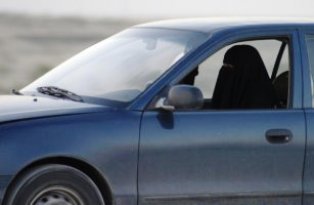|
By Mai Yamani
The unexpected visibility and assertiveness of women in the revolutions unfolding across the Arab world – in Tunisia, Egypt, Libya, Yemen, Bahrain, Syria and elsewhere – has helped propel what has become variously known as the “Arab awakening” or “Arab Spring.”
Major changes have occurred in the minds and lives of women, helping them to break through the shackles of the past, and to demand their freedom and dignity.
Since January 2011, images of millions of women demonstrating alongside men have been beamed around the world by television journalists, posted on YouTube, and splashed on the front pages of newspapers. One saw women from all walks of life marching in hope of a better future, for themselves and for their countries.
They appeared prominently – eloquent and outspoken, marching daily, holding caricatures of dictators and chanting calls for democratic change. They walked, bussed, traveled in carts, telephoned and tweeted with compatriots, motivated in part by social demands – above all for their own empowerment.
The contrast between this dynamic space for open protest and Saudi Arabia could hardly be starker. Saudi women find themselves living in a petrified system. Faces of the royal family are seen everywhere; the faces of women are shrouded, forcibly hidden.
Nowhere else in the world do we see modernity experienced as such a problem. Skyscrapers rise out of the desert, yet women are not permitted to ride with men in their lifts. Nor are they allowed to walk in the streets, drive a car, or leave the country without the permission of a male guardian.
Fatima, a young woman from Mecca, sent me an email at the height of the Egyptian revolution: “Forget about the cries for freedom; I can’t even give birth without being accompanied to hospital by a mihrim [male guardian].” She went on, “And the mutawaa [the religious police, known officially as the Committee for the Promotion of Virtue and the Prevention of Vice, and whose leader has ministerial rank] have been given the right to humiliate us in public.” Indeed, the mutawaa saw their wide powers enhanced even more by decrees issued by King Abdullah in March, after helping to suppress protests in the kingdom earlier in the month.
Yet globalization knows no limits, not even those set by the guardians of Islamic probity. Nine-year-old Saudi girls chat online, disregarding fatwas issued by Wahhabi clerics that forbid them access to the Internet without the supervision of a male guardian. Many women remain secretly glued to satellite television channels, watching their peers in the public squares of Egypt or Yemen, beyond their reach but not beyond their imagination.
On May 21, a brave woman named Manal al-Sharif broke the silence and apathy, daring to defy the ban on women driving. For the next week she sat in a Saudi prison. But, within two days of her detention, 500,000 viewers had watched the YouTube video of her excursion. Thousands of Saudi women, frustrated and humiliated by the ban, have staged a “driving day” last Friday, June 17.
Saudi Arabia is the only country in the world that forbids women to drive cars. The system of confinement that the ban represents is justified neither by Islamic texts nor by the nature of the diverse society that the Al-Saud and their Wahhabi partners’ rule. Indeed, it is far removed even from the rest of the Arab world – which has become glaringly obvious in the context of massive social upheaval almost everywhere else in the region.
Enforced segregation is mirrored in every aspect of Saudi life. Religious education constitutes up to 50 percent of students’ curriculum. As a result, Wahhabi dogma penetrates every home in the country. Textbooks – pink for girls, blue for boys, each with different contents – emphasize the rules prescribed by Imam Mohammad bin Abdul Wahhab, an 18th-century cleric and the founder of Wahhabism.
The Saudi judicial system is one of the most formidable obstacles to women’s aspirations, relying on Islamic interpretations that protect a defensive patriarchal system. Indeed, not only do judges’ decisions support the system, but the reverse is also true: patriarchy has become the driving force of the law.
Thus, Saudi women are barred from the legal profession on the basis of a Wahhabi stricture that “a woman is lacking in mind and religion.” In other words, the rule of law in Saudi Arabia is the rule of misogyny – the comprehensive legal exclusion of women from the public sphere.
Saudi rulers have announced that demonstrations are “haram” – a sin punishable by jail and flogging. Now some clerics have pronounced driving by women to be foreign-inspired haram, punishable in the same way. Yet, despite such threats, many Saudi women took to the streets last week, after thousands had joined the “We are all Manal al-Sharif” page on Facebook; and countless other videos of women driving have appeared on YouTube since her arrest.
Like Manal, they, too, have been detained, and the government appears determined to prosecute them. But Wajeha al-Huwaider, Bahia al-Mansour, Rasha al-Maliki, and many other activists are nonetheless insisting that driving a car is their legitimate right, and are eloquently demanding the removal of restrictions and an end to women’s dependency.
Rosa Parks’ revolutionary bravery in refusing to move to the back of a Montgomery, Alabama municipal bus in 1955 helped spark the American civil rights movement. We shall soon find out whether the defiance of Saudi women against their own systematic confinement by the regime produces a similar effect.
Mai Yamani is an author whose most recent book is “Cradle of Islam.” THE DAILY STAR publishes this commentary in collaboration with Project Syndicate © (www.project-syndicate.org).
| 

